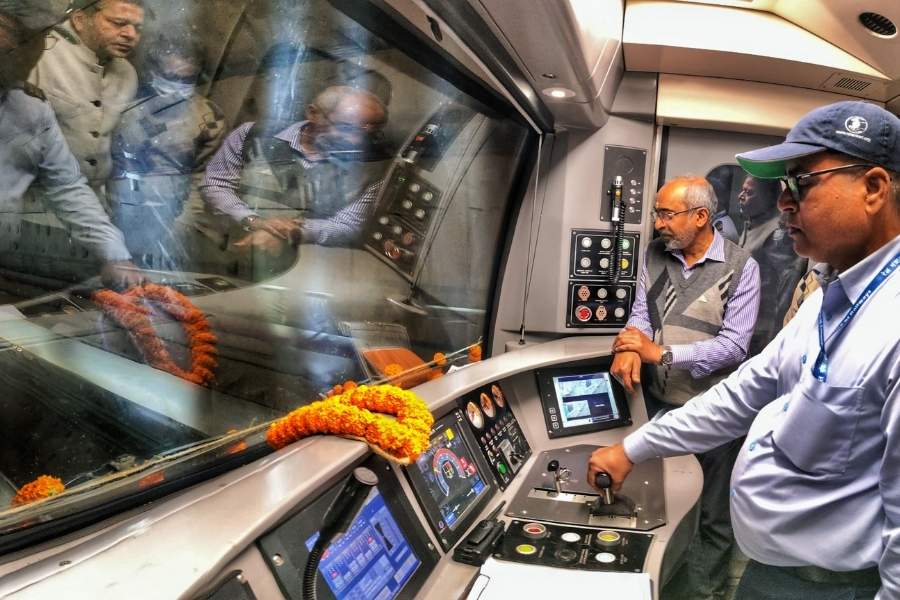 Wednesday, 22 January 2025
Wednesday, 22 January 2025
 Wednesday, 22 January 2025
Wednesday, 22 January 2025
Wolves have been blamed for the terror that has gripped Bahraich in Uttar Pradesh, but Dr Yadvendradev Vikramsinh Jhala, an expert on the Indian wolf and a renowned wildlife scientist, believes that the Indian wolf may or may not be behind the attacks on humans in the region.
Over the past few months, more than 10 lives have been lost in Bahraich, according to PTI reports from the ground. UP chief minister Adityanath has declared Mahsi tehsil a ‘Wildlife Disaster’ zone, promising compensation and starting ‘Operation Bhediya’ a forest department effort to track down the wolves responsible for the killings.
Drone cameras, thermal sensors, and wolf traps have been deployed, and so far, four wolves have been captured.
“Where is the evidence that these wolves were involved in the attacks?” asked Jhala, who recently ended his tenure as dean at the Wildlife Institute of India and has been a key figure in Project Tiger and Project Cheetah in India.
Jhala, who has studied wolves extensively, said that the attacks in Bahraich lack the tell-tale signs of wolf behaviour. Wolves typically hunt in packs, and their kills follow a clear pattern, he pointed out.
“This is not the work of a [wolf] pack, but of a single animal” Jhala insisted.
Another wildlife expert, Dr Shaheer Khan, had initially supported the idea of a pack being involved. He had told the news agency ANI that wolves are social animals, often hunting in packs of four to eight members, with an alpha pair leading the group. Khan speculated that the wolves could have mistaken human children for their natural prey.
But Jhala pushed back on this notion, stating that wolves attacking humans due to confusion was highly unlikely.
Another widely circulated theory comes from Gyan Prakash Singh, a retired Indian Forest Service officer. He speculated that the wolves may be seeking revenge for the killing of their cubs, citing previous incidents in Uttar Pradesh where wolves retaliated against humans after their cubs were harmed. Singh said a similar pattern may be unfolding in Bahraich, where wolves relocated to the Chakia forest after their cubs were crushed by a tractor earlier this year.
Jhala dismissed that theory as well: “Wolves rarely attack humans and when they do it’s never out of revenge.”
He iterated: “There is no evidence to support that wolves attack out of revenge…. Wolves or any wild animal have no sense of vengeance, except elephants.”
The main problem, Jhala insisted, was socio-economic. Bahraich is one of the poorest districts in Uttar Pradesh.
“The main problem is poverty,” Jhala said.
Jhala appreciated the Uttar Pradesh government’s efforts for catching the wolves and to provide better housing and improve safety in the region.
The lack of infrastructure makes the region more vulnerable to animal encounters.
Jhala suggested that the culprits in the Bahraich case may or may not be the Indian wolf, common to the region.
“They could be wolves, captive pet wolf, wolf dog-hybrid or feral dog” he said.
Uttar Pradesh chief minister Adityanath on Sunday assured the residents of Mahis tehsil that the forest department, district administration and police would continue working until the wolf threat ends.
The CM also conducted an aerial survey of the region and met families of those who lost their lives in the recent animal attacks. He said that 25 teams, comprising 165 personnel from the forest department, have been deployed to ensure public safety.
“Human-animal conflict needs to be addressed, but we must focus on the facts,” Jhala said.
Jumping to conclusions without evidence could lead to the unnecessary persecution of wolves, animals that play a crucial role in maintaining the ecosystem, he said.
Until conclusive evidence comes up, the blame on wolves remains “entirely speculative,” Jhala said.







